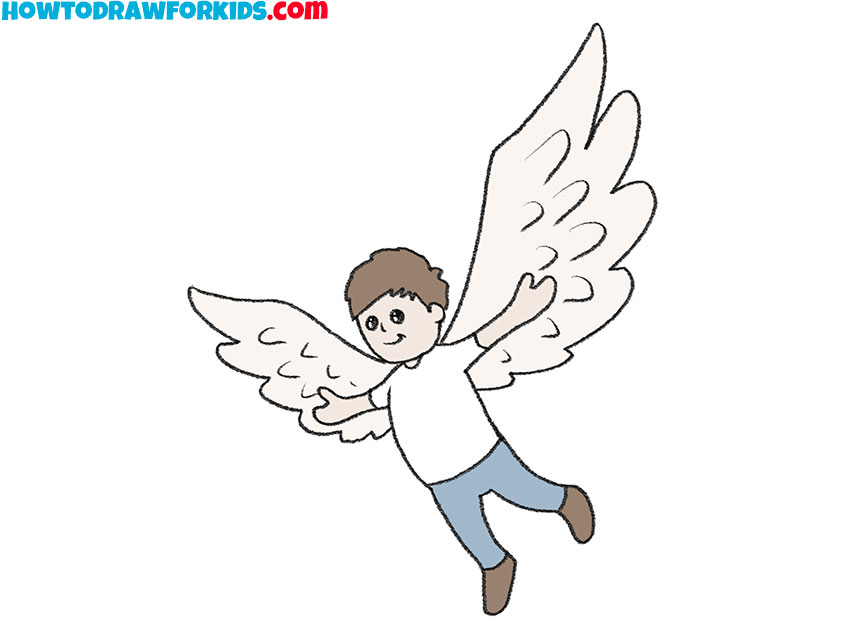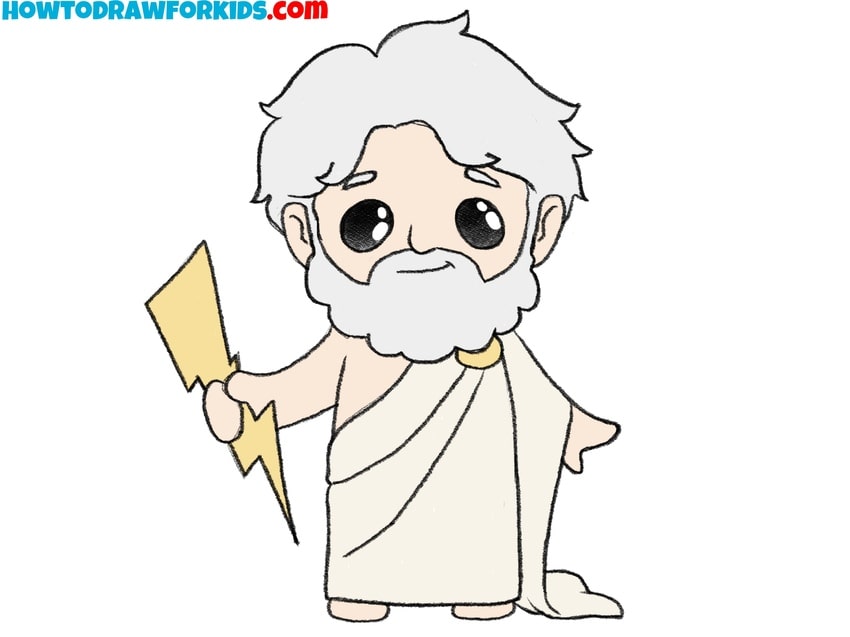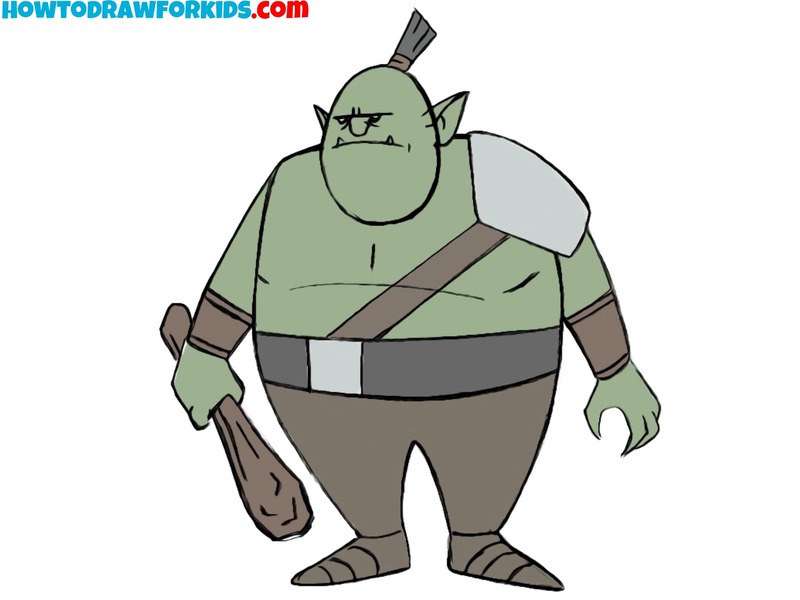How to Draw a Cyclops
In this lesson I will tell you and show you in detail how to draw a Cyclops. This lesson will be simple and very interesting.

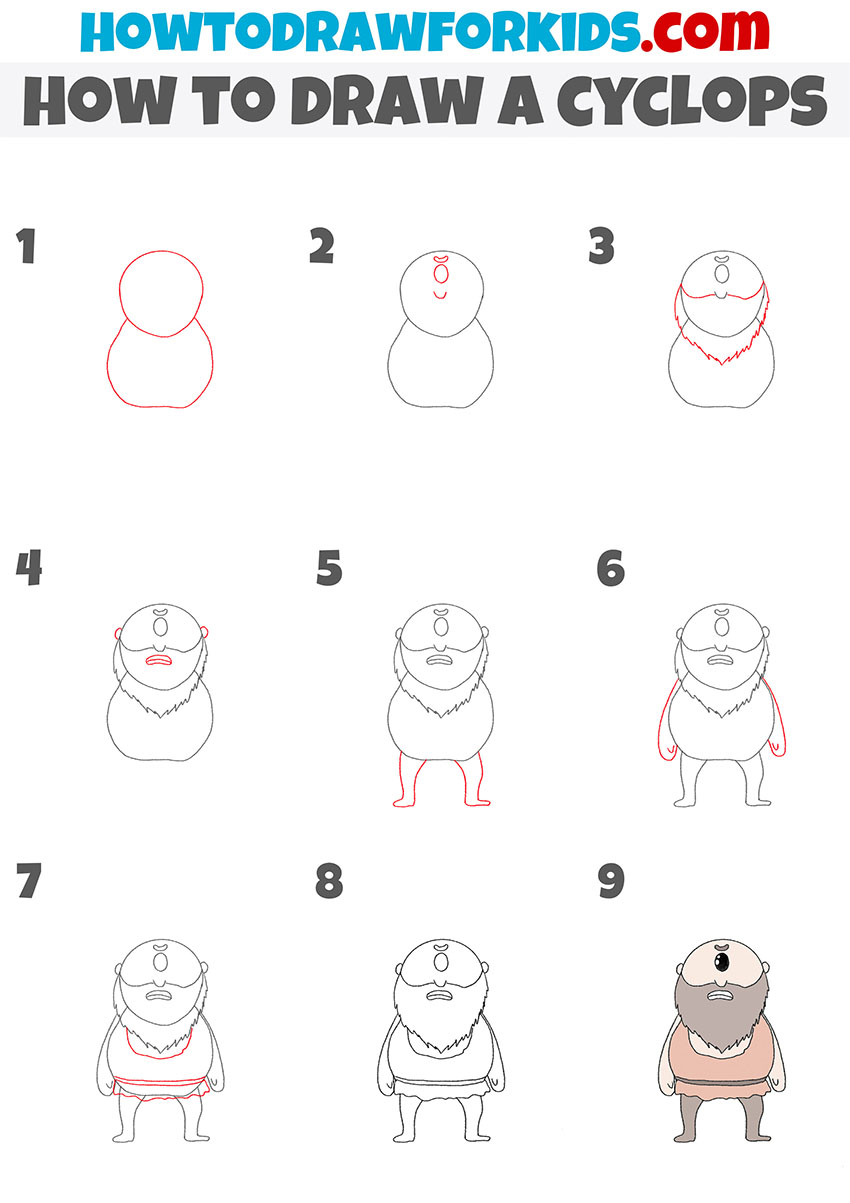
I bring to your attention a clear and accessible instruction on how to draw a Cyclops step by step. This is a very unusual character and his drawing will be very exciting. I hope that the drawing process will give you pleasure and you will have a pleasant experience.
Cyclops is a one-eyed giant, which is known to us from ancient Greek mythology. According to ancient legends, the Cyclops lived in a cave, had a ferocious and cruel character. It is also known that the Cyclops was prone to cannibalism.
In the picture you see a Cyclops, who has a strong physique and a long thick beard. There is no hair on the head and there is a single eye on the forehead. Follow all the steps in this tutorial in sequence and try to draw the same lines as in the example to get a great result. Now I will ask you to take all the necessary art supplies and start the lesson.
Materials
- Pencil
- Paper
- Eraser
- Coloring supplies
Time needed: 30 minutes
How to Draw a Cyclops
- Draw the head and torso.
First draw a circle to represent the head, then add the wide torso.
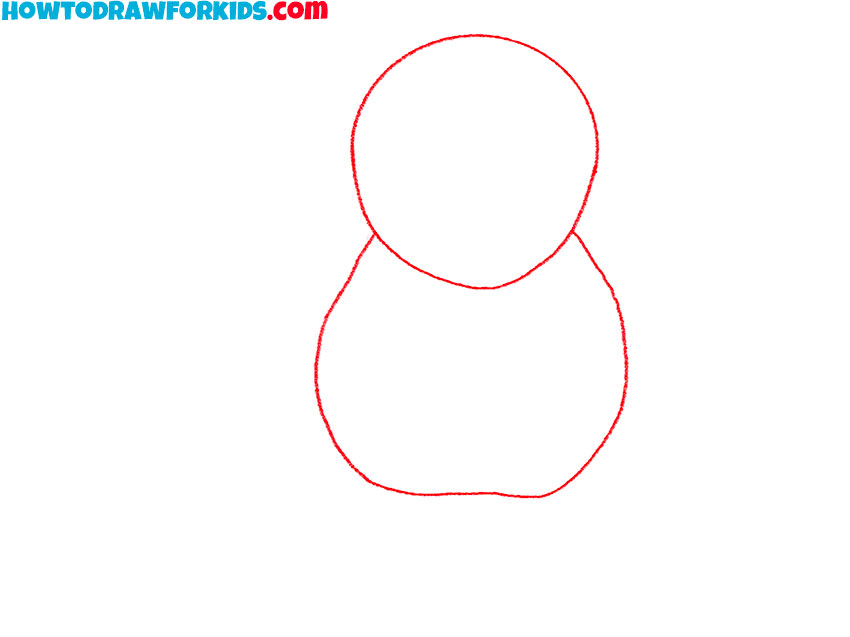
- Add elements of the face.
Depict the eyebrow, an oval-shaped eye, and use a small, curved line to draw the nose.

- Depict the beard.
With smooth lines, mark the upper contour and draw the lower contour with a zigzag line.
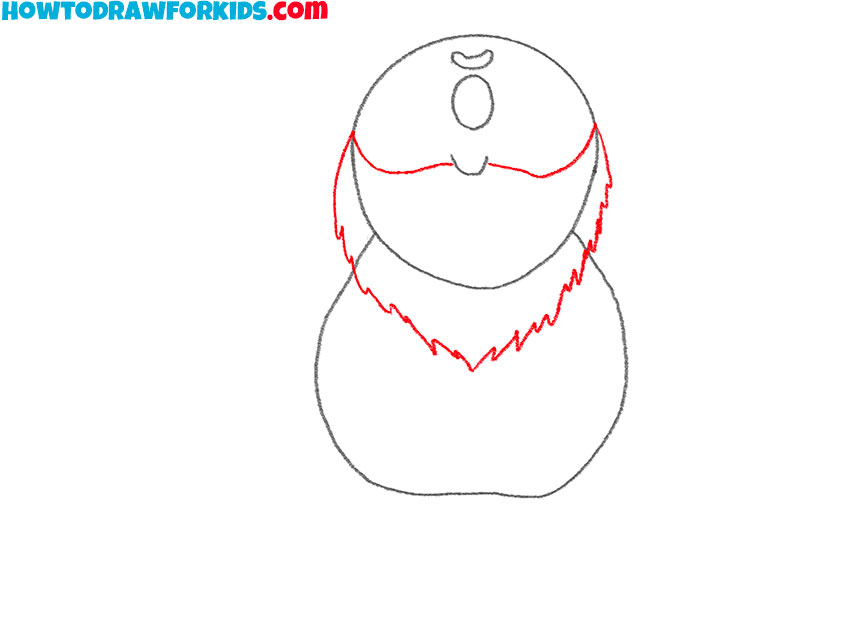
- Draw the rest of the elements of the head.
Add two small ears on the sides and draw the mouth.

- Depict the legs.
At the bottom of the torso, add two legs in which the feet are turned in opposite directions.
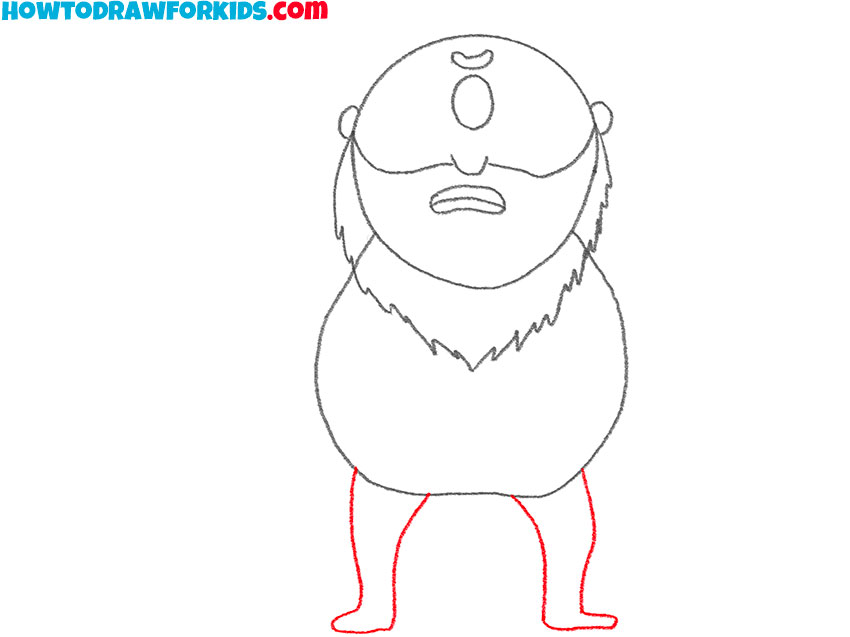
- Draw the hands.
With smooth lines, depict the arms that fit snugly against the body.
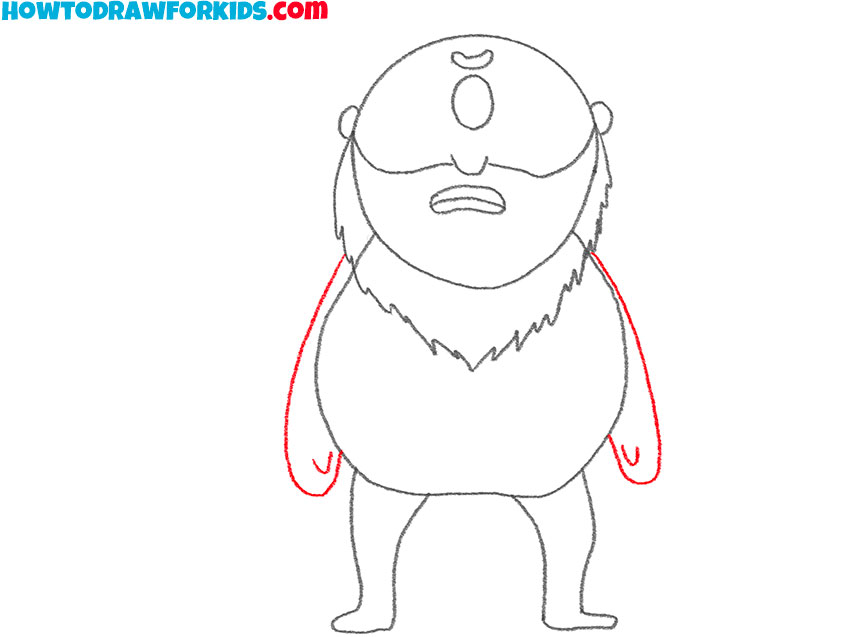
- Add the clothes.
Draw the collar, belt, and bottom outline of the clothes.

- Correct inaccuracies.
Take the eraser and carefully erase all the extra lines in your drawing.

- Color the drawing.
Use beige, black, pink, and gray to color the Cyclops.

As a reminder, you can now download a PDF file that contains a brief instruction and additional training materials necessary for the effective implementation of this lesson.

